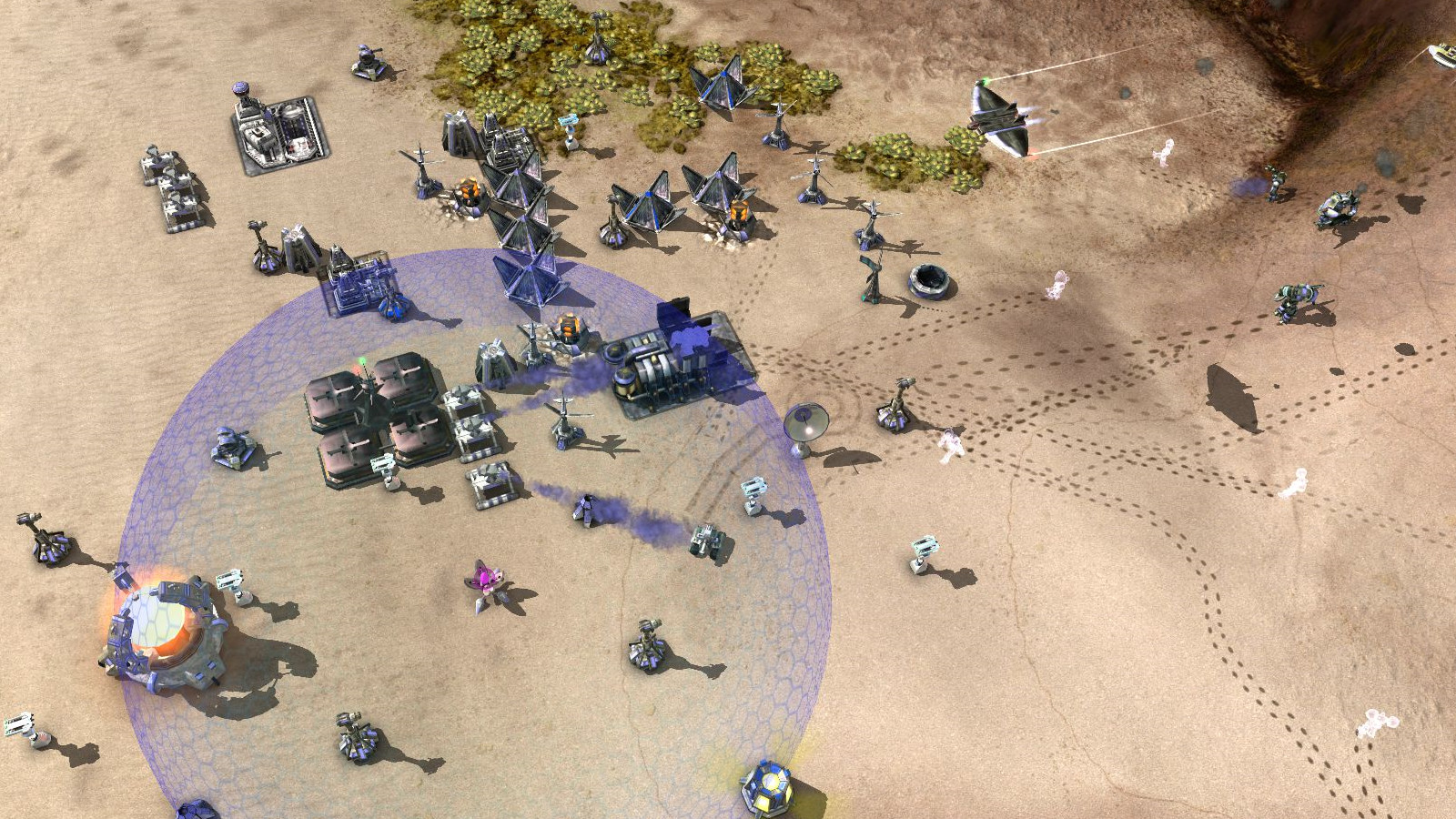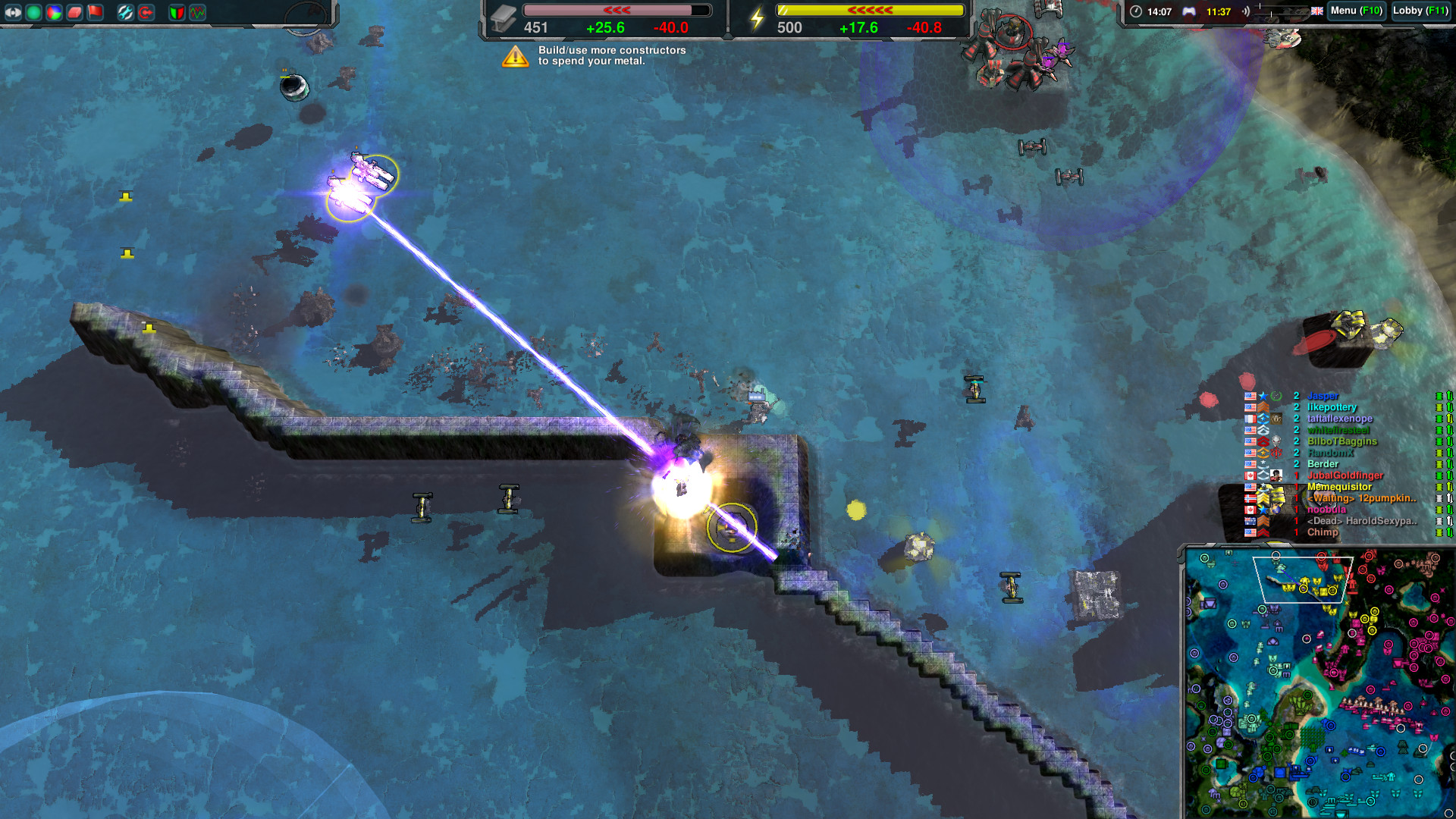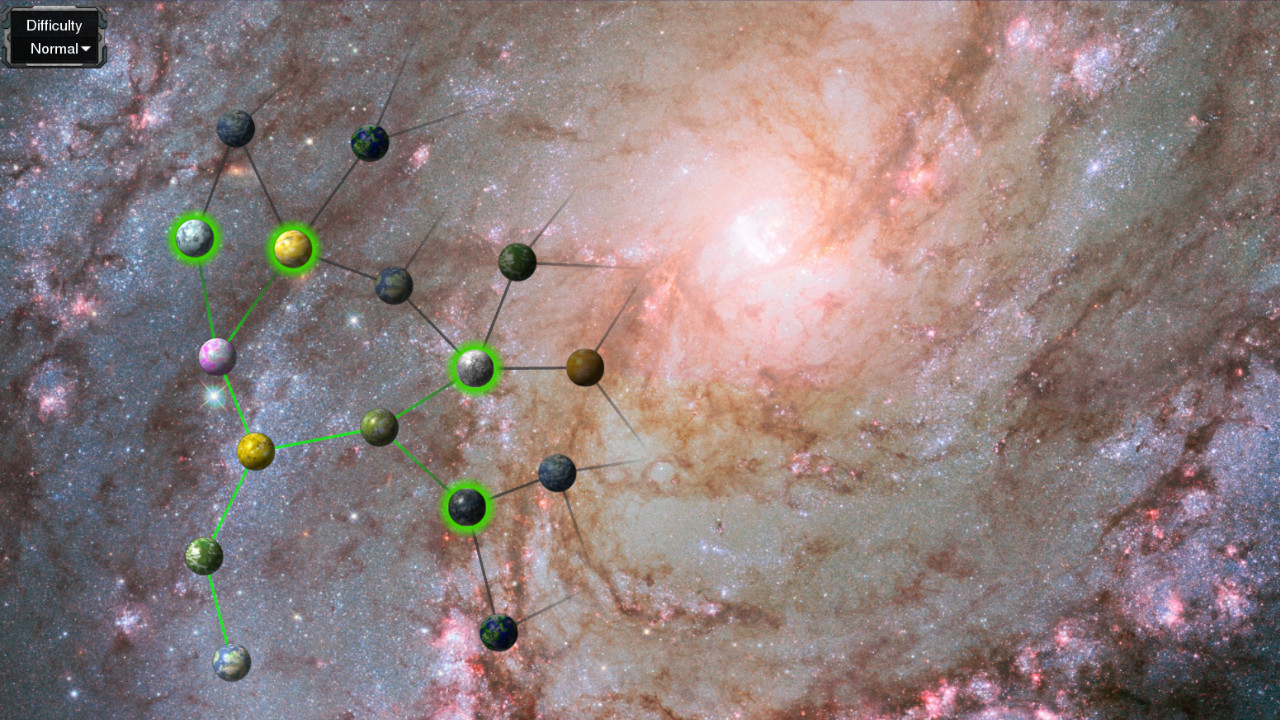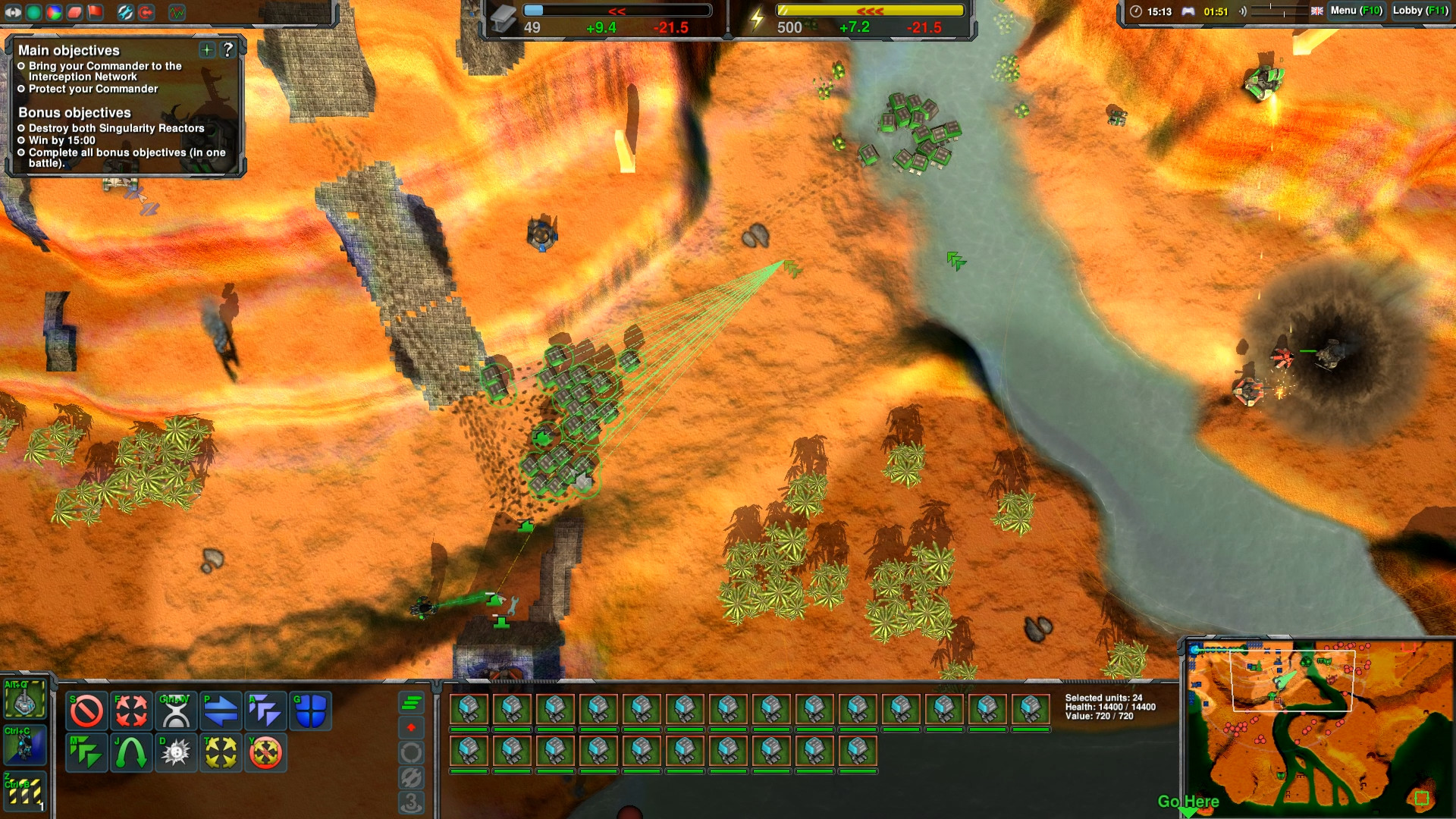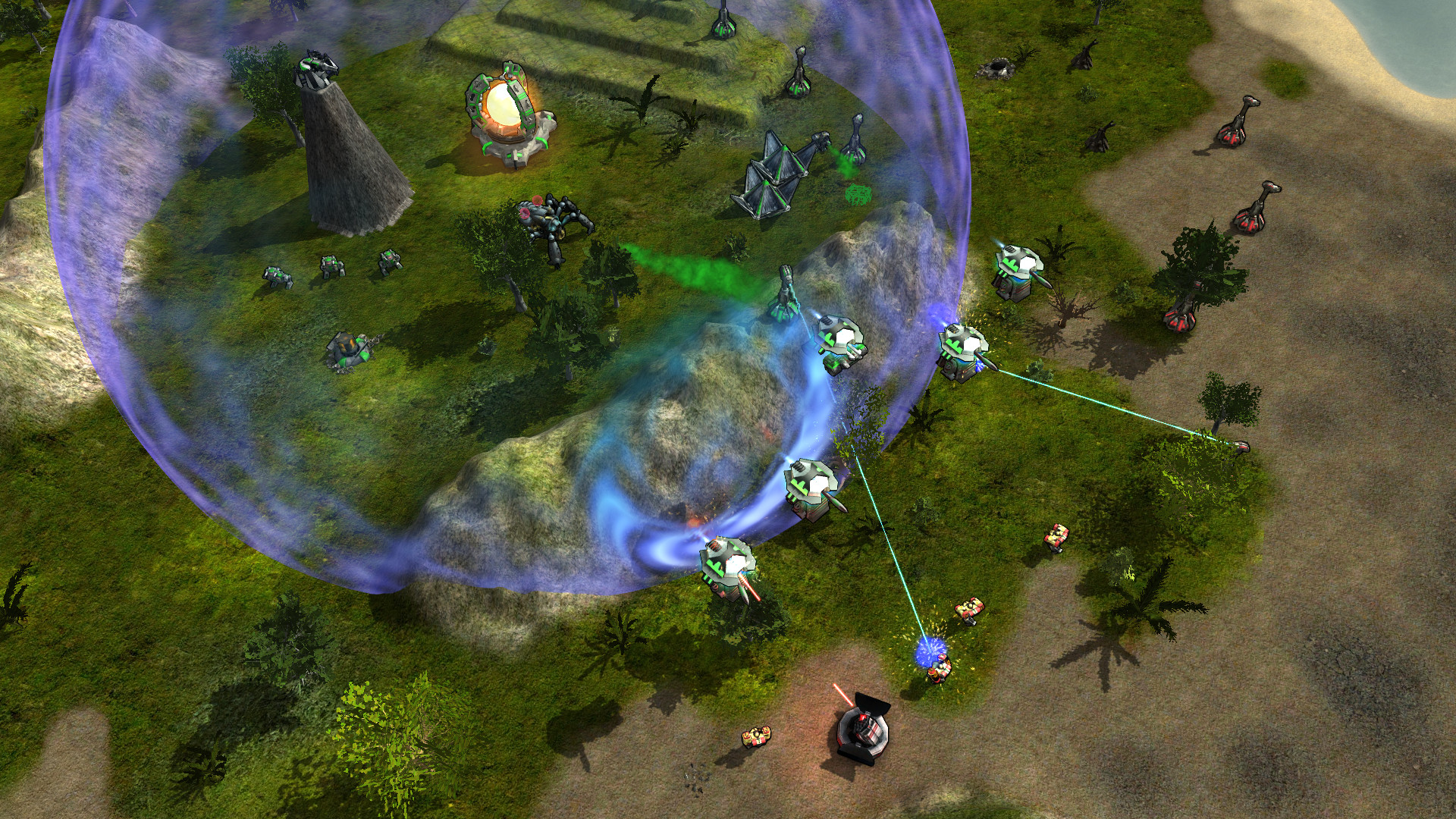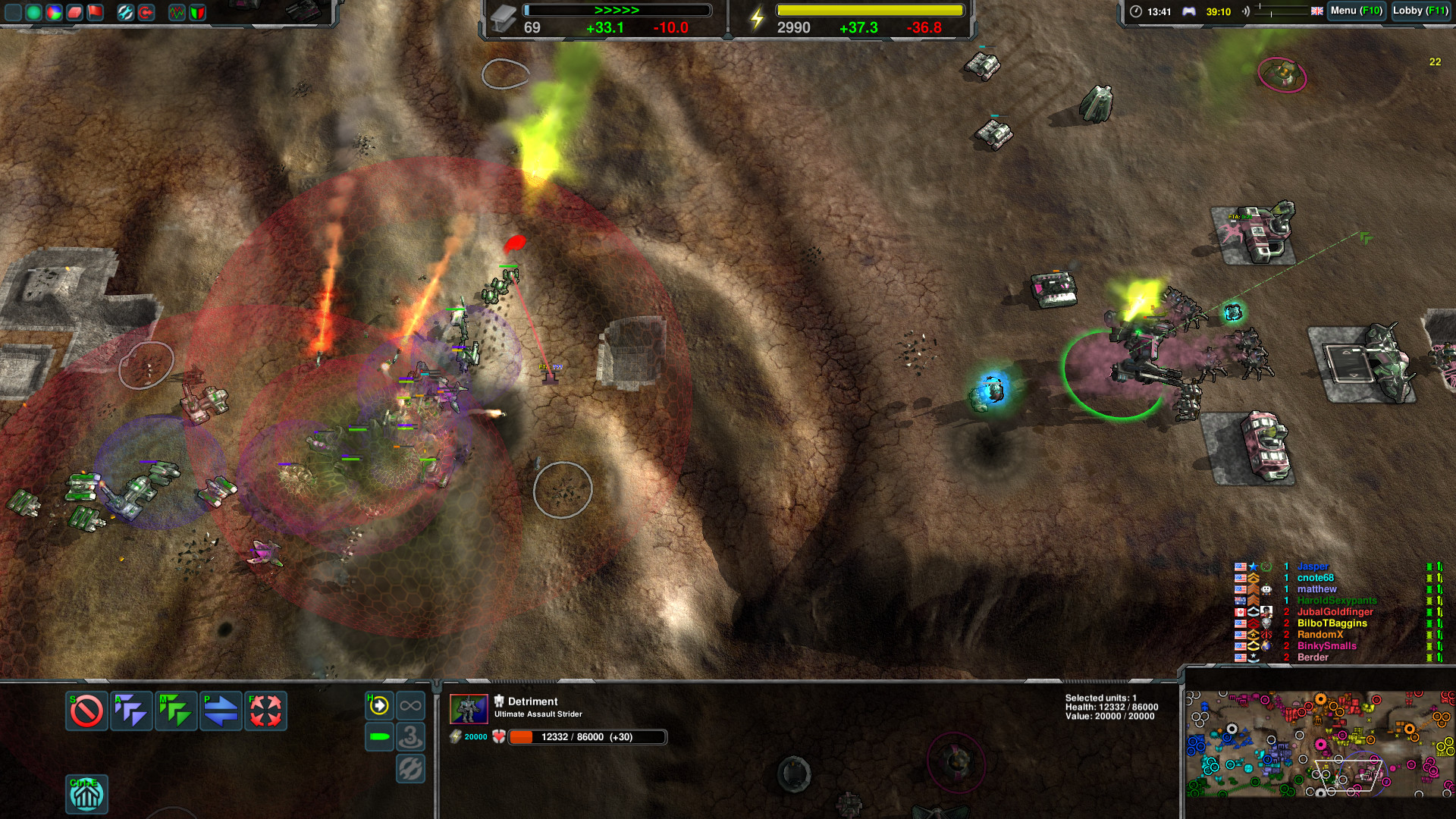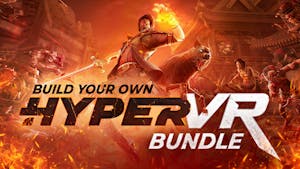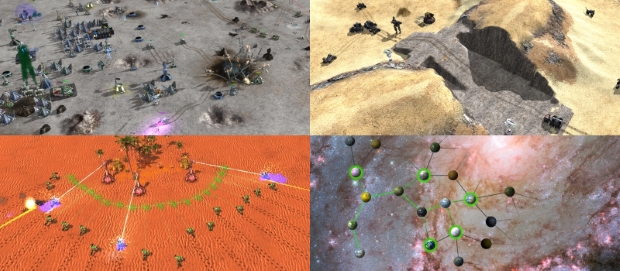
Commander wanted! Construct giant robots, build an army of a thousand Fleas. Move mountains if needed. Bury the enemy at all cost!
- Traditional real time strategy with physically simulated units and projectiles.
- 100+ varied units with abilities including terrain manipulation, cloaking and jumpjets.
- 70+ mission galaxy-spanning campaign to be enjoyed solo or co-op with friends.
- Challenging, (non-cheating) skirmish AI and survival mode.
- Multiplayer 1v1 - 16v16, FFA, coop. ladders, replays, spectators and tournaments.
- PlanetWars - A multiplayer online campaign planned to start in May.
- Really free, no paid advantages, no unfair multiplayer.
Fully Utilized Physics
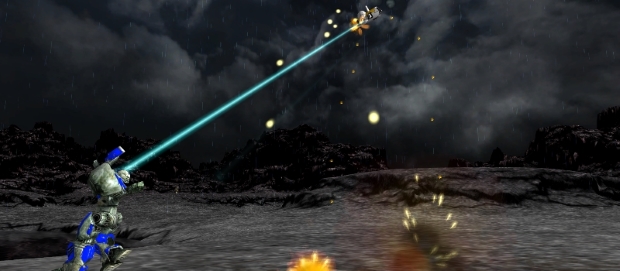
Simulated unit and projectile physics is used to a level rarely found in a strategy game.
- Use small nimble units to dodge slow moving projectiles.
- Hide behind hills that block weapon fire, line of sight and radar.
- Toss units across the map with gravity guns.
- Transport a battleship to a hilltop - for greater views and gun range.
Manipulate the Terrain
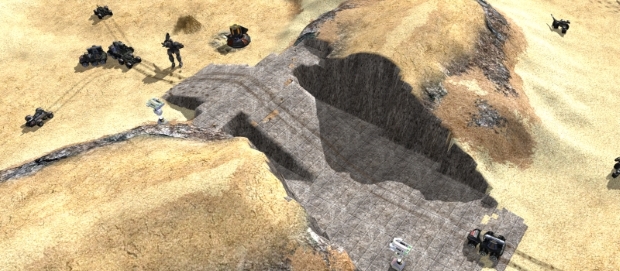
The terrain itself is an ever-changing part of the battlefield.
- Wreck the battlefield with craters that bog down enemy tanks.
- Dig canals to bring your navy inland for a submarine-in-a-desert strike.
- Build ramps, bridges, entire fortress if you wish.
- Burn your portrait into continental crust using the planetary energy chisel.
Singleplayer Campaign and Challenging AI
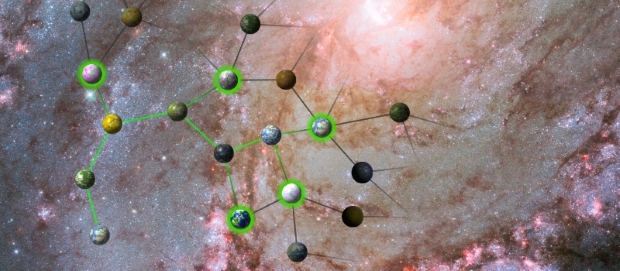
Enjoy many hours of single player and coop fun with our campaign, wide selection of non-cheating AIs and a survival mode against an alien horde.
- Explore the galaxy and discover technologies in our singleplayer campaign.
- Face a challenging AI that is neither brain-dead nor a clairvoyant cheater.
- Have some coop fun with friends, surviving waves of chicken-monsters.
- Cloaking? Resurrection? Tough choices customizing your commander.
Casual and Competitive Multiplayer
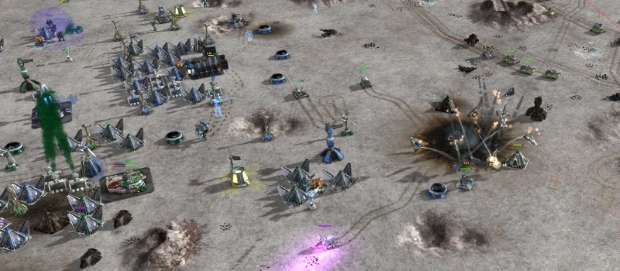
Zero-K was built for multiplayer from the start, this is where you can end up being hooked for a decade.
- Enjoying epic scale combat? Join our 16v16 team battles!
- Looking for a common goal? Fight AIs or waves of chicken-monsters.
- Prefer dancing on a razor's edge? Play 1v1 in ladder and tournaments.
- Comebacks, betrayals, emotions always running high in FFA.
- Want to fight for a bigger cause? Join PlanetWars, a competitive online campaign with web-game strategic elements, diplomacy and backstabbing (currently on hiatus pending an overhaul).
Power to the People
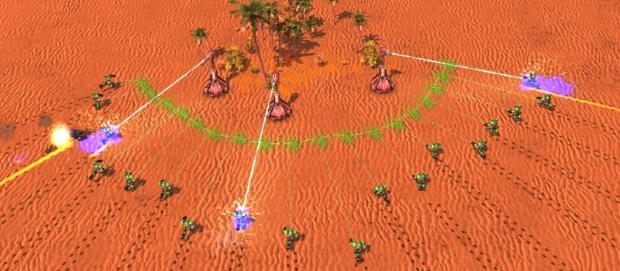
We are RTS players at heart, we work for nobody. We gave ourselves the tools we always wanted to have in a game.
- Do what you want. No limits to camera, queue or level of control.
- Paint a shape, any shape, and units will move to assume your formation.
- Construction priorities let your builders work more efficiently.
- Don't want to be tied down managing every unit movement? Order units to smartly kite, strafe or zig zag bullets.
Plenty of Stuff to Explore (and Explode)
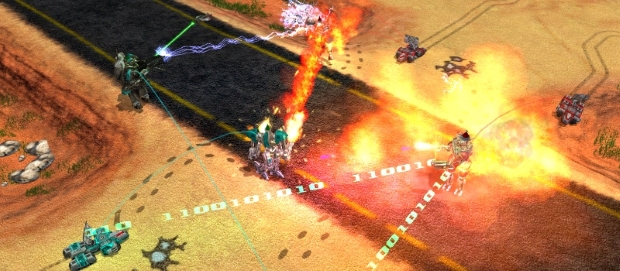
Zero-K is a long term project and it shows, millions hours of proper multiplayer testing and dozens of people contributing ever expanding content.
- Learn to use all of our 100+ units and play on hundreds of maps.
- Invent the next mad team-tactics to shock enemies and make allies laugh.
- Combine cloaking, teleports, shields, jumpjets, EMP, napalm, gravity guns, black hole launchers, mind control and self-replication.
- Tiny flea swarm that clings to walls?
- Jumping "cans" with steam-spike?
- Buoys that hide under water to ambush ships?
- Mechs that spew fire and enjoy being tossed from air transports?
- Carrier with cute helicopters?
- Jumping Jugglenaut with dual wielding gravity guns?
- Meet them in Zero-K!
Cold Take #13 - Pro-Simplicity, Anti-Nuke

Total Annihilation, a game not known for keeping things simple, spiced things up with anti-nuke missiles that shoot down incoming nukes. This means a well-prepared enemy might not lose their base. The same system can be found in every single descendant of TA, with many of them building on it and making it more complex. As you might expect by now, Zero-K went the other way, paring anti-nukes down to their simplest form. We still have recognisably TA-style nukes and anti-nukes, but they are no more complicated than is is required to produce great stategic nuke gameplay.
Strategically, anti-nukes have one purpose: to be a weak point that the enemy can hit for massive damage. At least, this is what we decided back in Complete Annihilation , when we were looking for ways to encourage surgical strikes into the enemy base. Anti-nukes are the ultimate weak point, indeed, bases tend to blow up shortly after their anti-nuke is destroyed. The closest contender is the violently explosive Singularity Reactor, but it can often be built to the side to minimise friendly fire, and there is relatively little profit in destroying one once reclaim is taken into account. Anti-nukes are also particularly vulnerable to Widows and tactical EMP missiles, since a temporarily stunned anti-nuke can be just as bad as a dead one. Without nukes and anti-nukes, armies would have to slog through bases to destroy them, which would drag out won games, and give underdogs little opportunity to make a comeback.

Strategy aside, anti-nukes are also great for the Rule of Cool. Ironically, giving nukes a hardcounter lets them be much more powerful, and more common. This is great, since players seem to love nukes, but not so much when they bring games to an abrupt end. Zero-K might even have the largest nuke, since it has only grown since TA, but it is hard to compare across games with different scales. Our nukes are certainly large enough to destroy a whole base or front, and drastically alter the course of a battle.
An unblockable and highly devastating nuke would essentially be a Wonder from Age of Empires; something that puts the game on a strict time limit, then declares a winner. This is fine, and the fireworks display is a nice addition, but it becomes unsatisfying if too many games end like this. Wonders and other unblockable superweapons are insufficiently interactive, so it feels unfair to lose to one, whereas nukes with a clear counter give the defender more agency. Many games with unblockable nukes, such as Starcraft and C&C, avoid the issue by making their nukes relatively unimpressive.
Zero-K even provides a direct comparison of blockable and unblockable nukes, since its three "true" superweapons cannot be blocked. The cheapest of them costs 4x more than a nuclear silo, so they are reasonably rare, and can only ever appear late in the game. Still, the true superweapons are more controversial in the community and have been harder to balance, even though nukes appear much more frequently. The fairness inherent in being able to block nukes seems to be important.

As previously mentioned, Zero-K anti-nukes are just about as simple as possible. This is no great feat, since anti-nukes are fundamentally just a missile that shoots at another missile. The complexity of anti-nukes in other games tends to come from:
Zero-K has a single anti-nuke, and it takes the form of a dedicated structure. It is extremely atomic , and relatively expensive, tipping the balance in favour of offense over defense. A nuclear silo costs 8000, each missile costs 3240, and an anti-nuke costs 3000. Two anti-nukes only provide bare minimum coverage on large maps, so reliable coverage can cost more than the nuke it is meant to block. This is intentional, since offense should grow in power as the game progresses, and nukes need to be common to give bases weak points. At least anti-nukes block missiles flying through their coverage, because otherwise using circles to cover the backs of a rectangular map would cost far too much.

The simplicity of anti-nukes extends to their physics, which is on the gamey end of the spectrum . Anti-nuke missiles pierce absolutely everything; allies, enemies, terrain, because the stakes are so high. A system has to be reasonably predictable to feel fair, and the importance of fairness increases with the cost of failure. So if terrain blocked anti-nukes, then the game would have to make it absolutely clear when this can happen. But such a UI sounds hard and pointless, so instead we gave anti-nukes a flight path that will very rarely clip into terrain, and called it a day. But a more unusual aspect of anti-nukes is to do with what they can fire at.
Anti-nukes cover a simple circular area, with the guarantee being that no nuke will land in or pass through this area (provided fewer than three nukes are launched simultaneously). But the "attack range" of an anti-nuke, i.e. how close a nuke needs to be for the anti-nuke to fire, extends beyond this circle, so that it can shoot at nukes before they land. This is weird when you think about it in terms of unit physics, since surely an anti-nuke could technically offer protection to targets on its flanks. Indeed, a more physicy anti-nuke could fire at all reachable nukes, but this would give it a weird effective coverage area that depend on the direction and pitch of incoming missiles, and even on the shape of nearby terrain. Communicating such coverage would be a UI nightmare, and inevitably be misunderstood, making interception feel like a roll of the dice.

If you want to get really pedantic, then, technically, blocking nukes in Zero-K is far from simple. This is because every unit can do it, and I have even seen the following used to intercept nukes:

But enough about anti-nukes, what about the nuke itself? There is much less to say here since they follow the basic nuke formula, and refinements were mostly implemented via the anti-nuke. Check out the Core nuke in BAR, it has the same damage and area of effect, so the common ancestor dates back to at least 2007. There have been a few changes though.
The nuclear silo opening animation was changed in the mid 2010s to nerf Athena nuke interception. Previously, nuclear silos would open only when told to fire, which let a watchful enemy fly a cloaked Athena over the top to intercept it. This decloaked the Athena, so timing was important. Players countered this by manually priming their silos with the Wait command. So silos were changed to open as soon as they have a missile stockpiled, making them ready to fire immediately, which is just a case of removing a way for unit AI to be stupid .
The flashing "Nuke Launched" indicator is another somewhat recent addition. This was more of an accessibility thing than anything else, because we had always balanced nukes around a globally audible launch sound. But not all sounds are heard, and it became a source of unfairness. The alternative was to remove the global aspect of the sound, but this would have removed my favourite part of nukes; the mind games. Nukes take a while to land, so armies can just about dodge them if they guess the impact site correctly. This creates a whole guessing game of large scale army movements, which can even be exploited or corralled by the team that launched the nuke.
But why would people even launch nukes at armies? Because anti-nuke coverage is easier to pierce around the edges of enemy territory, so sometimes an army is the only available target. All the mechanics support each other.

By far the funniest, and possibly oldest, nuke change happened back in CA. Have you ever wondered why nukes look like a rocket, but launch at full speed with no acceleration? This is thanks to a developer called det, the namesake of the Detriment, who launched a nuke at his neighbour in a free-for-all on Azure Rampart. His neighbour had an anti-nuke which was, unfortunately, within attack range of det's nuke. This caused the anti-nuke to fire immediately, so it promptly flew over and blew up the nuke right on top of det's base. Nuke gained more launch speed as a result, although these days the "new" anti-nuke opening animation might have made the increased speed redundant.
More units and mechanics were changed as a result of things that happened to det on Azure Rampart, but they will have to wait for future articles.
Index of Cold Takes
Zero-K has nukes. This should come as no surprise, since otherwise the genre police would revoke our sci-fi license. Even a few fantasy games have nukes, but wherever they are found, they all work basically the same way:
- Climb to the upper reaches of the tech tree.
- Build a nuclear missile silo.
- Build a nuclear missile.
- Launch it at the enemy base.
- The enemy is now down one base.

Total Annihilation, a game not known for keeping things simple, spiced things up with anti-nuke missiles that shoot down incoming nukes. This means a well-prepared enemy might not lose their base. The same system can be found in every single descendant of TA, with many of them building on it and making it more complex. As you might expect by now, Zero-K went the other way, paring anti-nukes down to their simplest form. We still have recognisably TA-style nukes and anti-nukes, but they are no more complicated than is is required to produce great stategic nuke gameplay.
Strategically, anti-nukes have one purpose: to be a weak point that the enemy can hit for massive damage. At least, this is what we decided back in Complete Annihilation , when we were looking for ways to encourage surgical strikes into the enemy base. Anti-nukes are the ultimate weak point, indeed, bases tend to blow up shortly after their anti-nuke is destroyed. The closest contender is the violently explosive Singularity Reactor, but it can often be built to the side to minimise friendly fire, and there is relatively little profit in destroying one once reclaim is taken into account. Anti-nukes are also particularly vulnerable to Widows and tactical EMP missiles, since a temporarily stunned anti-nuke can be just as bad as a dead one. Without nukes and anti-nukes, armies would have to slog through bases to destroy them, which would drag out won games, and give underdogs little opportunity to make a comeback.

Strategy aside, anti-nukes are also great for the Rule of Cool. Ironically, giving nukes a hardcounter lets them be much more powerful, and more common. This is great, since players seem to love nukes, but not so much when they bring games to an abrupt end. Zero-K might even have the largest nuke, since it has only grown since TA, but it is hard to compare across games with different scales. Our nukes are certainly large enough to destroy a whole base or front, and drastically alter the course of a battle.
An unblockable and highly devastating nuke would essentially be a Wonder from Age of Empires; something that puts the game on a strict time limit, then declares a winner. This is fine, and the fireworks display is a nice addition, but it becomes unsatisfying if too many games end like this. Wonders and other unblockable superweapons are insufficiently interactive, so it feels unfair to lose to one, whereas nukes with a clear counter give the defender more agency. Many games with unblockable nukes, such as Starcraft and C&C, avoid the issue by making their nukes relatively unimpressive.
Zero-K even provides a direct comparison of blockable and unblockable nukes, since its three "true" superweapons cannot be blocked. The cheapest of them costs 4x more than a nuclear silo, so they are reasonably rare, and can only ever appear late in the game. Still, the true superweapons are more controversial in the community and have been harder to balance, even though nukes appear much more frequently. The fairness inherent in being able to block nukes seems to be important.

As previously mentioned, Zero-K anti-nukes are just about as simple as possible. This is no great feat, since anti-nukes are fundamentally just a missile that shoots at another missile. The complexity of anti-nukes in other games tends to come from:
- Multiple types of nukes and anti-nuke, possibly varying slightly between factions.
- Mobile anti-nukes, commonly found on capital ships or as vulnerable utility vehicles.
- Stockpileable anti-nuke missiles that must be produced before the anti-nuke can fire.
Zero-K has a single anti-nuke, and it takes the form of a dedicated structure. It is extremely atomic , and relatively expensive, tipping the balance in favour of offense over defense. A nuclear silo costs 8000, each missile costs 3240, and an anti-nuke costs 3000. Two anti-nukes only provide bare minimum coverage on large maps, so reliable coverage can cost more than the nuke it is meant to block. This is intentional, since offense should grow in power as the game progresses, and nukes need to be common to give bases weak points. At least anti-nukes block missiles flying through their coverage, because otherwise using circles to cover the backs of a rectangular map would cost far too much.

The simplicity of anti-nukes extends to their physics, which is on the gamey end of the spectrum . Anti-nuke missiles pierce absolutely everything; allies, enemies, terrain, because the stakes are so high. A system has to be reasonably predictable to feel fair, and the importance of fairness increases with the cost of failure. So if terrain blocked anti-nukes, then the game would have to make it absolutely clear when this can happen. But such a UI sounds hard and pointless, so instead we gave anti-nukes a flight path that will very rarely clip into terrain, and called it a day. But a more unusual aspect of anti-nukes is to do with what they can fire at.
Anti-nukes cover a simple circular area, with the guarantee being that no nuke will land in or pass through this area (provided fewer than three nukes are launched simultaneously). But the "attack range" of an anti-nuke, i.e. how close a nuke needs to be for the anti-nuke to fire, extends beyond this circle, so that it can shoot at nukes before they land. This is weird when you think about it in terms of unit physics, since surely an anti-nuke could technically offer protection to targets on its flanks. Indeed, a more physicy anti-nuke could fire at all reachable nukes, but this would give it a weird effective coverage area that depend on the direction and pitch of incoming missiles, and even on the shape of nearby terrain. Communicating such coverage would be a UI nightmare, and inevitably be misunderstood, making interception feel like a roll of the dice.

If you want to get really pedantic, then, technically, blocking nukes in Zero-K is far from simple. This is because every unit can do it, and I have even seen the following used to intercept nukes:
- Dirtbag
- Jack
- Raven
- Athena
- Funnelweb

But enough about anti-nukes, what about the nuke itself? There is much less to say here since they follow the basic nuke formula, and refinements were mostly implemented via the anti-nuke. Check out the Core nuke in BAR, it has the same damage and area of effect, so the common ancestor dates back to at least 2007. There have been a few changes though.
The nuclear silo opening animation was changed in the mid 2010s to nerf Athena nuke interception. Previously, nuclear silos would open only when told to fire, which let a watchful enemy fly a cloaked Athena over the top to intercept it. This decloaked the Athena, so timing was important. Players countered this by manually priming their silos with the Wait command. So silos were changed to open as soon as they have a missile stockpiled, making them ready to fire immediately, which is just a case of removing a way for unit AI to be stupid .
The flashing "Nuke Launched" indicator is another somewhat recent addition. This was more of an accessibility thing than anything else, because we had always balanced nukes around a globally audible launch sound. But not all sounds are heard, and it became a source of unfairness. The alternative was to remove the global aspect of the sound, but this would have removed my favourite part of nukes; the mind games. Nukes take a while to land, so armies can just about dodge them if they guess the impact site correctly. This creates a whole guessing game of large scale army movements, which can even be exploited or corralled by the team that launched the nuke.
But why would people even launch nukes at armies? Because anti-nuke coverage is easier to pierce around the edges of enemy territory, so sometimes an army is the only available target. All the mechanics support each other.

By far the funniest, and possibly oldest, nuke change happened back in CA. Have you ever wondered why nukes look like a rocket, but launch at full speed with no acceleration? This is thanks to a developer called det, the namesake of the Detriment, who launched a nuke at his neighbour in a free-for-all on Azure Rampart. His neighbour had an anti-nuke which was, unfortunately, within attack range of det's nuke. This caused the anti-nuke to fire immediately, so it promptly flew over and blew up the nuke right on top of det's base. Nuke gained more launch speed as a result, although these days the "new" anti-nuke opening animation might have made the increased speed redundant.
More units and mechanics were changed as a result of things that happened to det on Azure Rampart, but they will have to wait for future articles.
Index of Cold Takes
[ 2024-06-02 01:25:37 CET ] [Original Post]
Minimum Setup
- OS: Ubuntu 13.04 or equivalent
- Processor: 2.0 GHz dual core CPU with SSE (Intel Core 2 Duo or equivalent)Memory: 4 GB RAM
- Memory: 4 GB RAM
- Graphics: 512 MB graphics card with OpenGL 3 support (GeForce 8800 or equivalent)
- Storage: 6 GB available spaceAdditional Notes: 64bit only. Big Picture mode is not supported
Recommended Setup
- OS: Ubuntu 17.10 or equivalent
- Processor: 3.0 GHz quad core CPU (Intel Core i5 or equivalent)Memory: 8 GB RAM
- Graphics: 2048 MB graphics card with OpenGL 3 support (high GT 500 series or equivalent)Network: Broadband Internet connection
- Storage: 8 GB available spaceAdditional Notes: 64bit only. Big Picture mode is not supported
GAMEBILLET
[ 6444 ]
GAMERSGATE
[ 2268 ]
MacGamestore
[ 1913 ]
FANATICAL BUNDLES
HUMBLE BUNDLES
by buying games/dlcs from affiliate links you are supporting tuxDB

